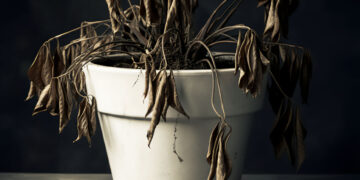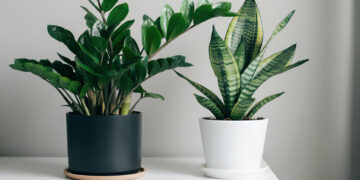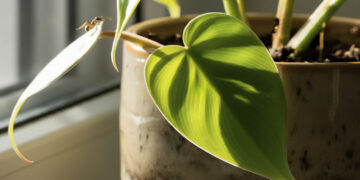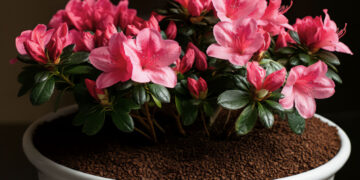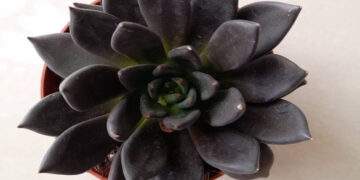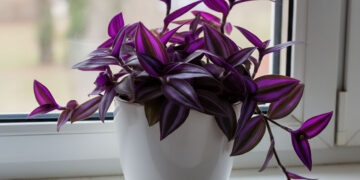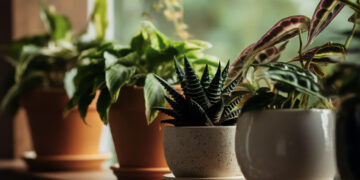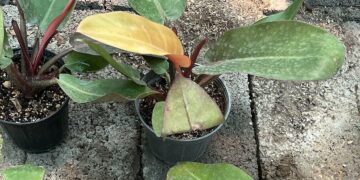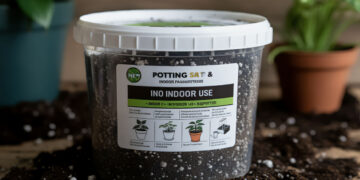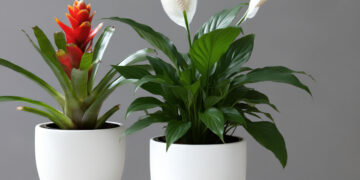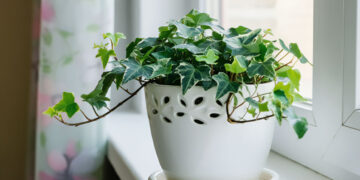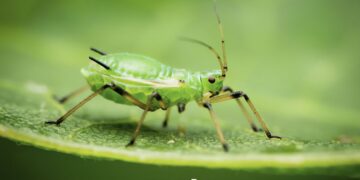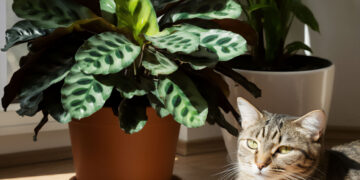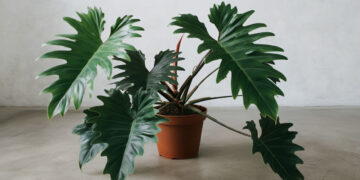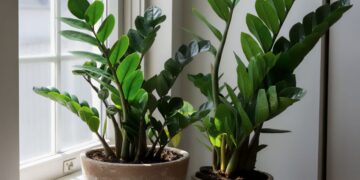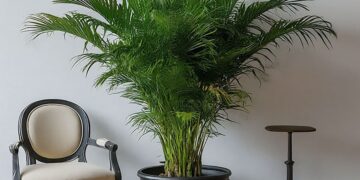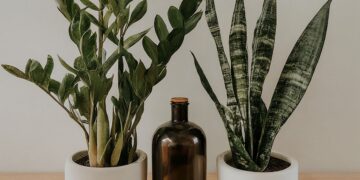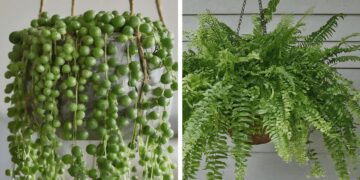Before anything else, it’s important to know that none of these houseplants are completely black. In fact, there’s no such thing as a completely black indoor plant.
I’ve introduced a few plants that you can choose based on the time you can dedicate to them, your environment’s conditions such as the amount of light you have, the size of your space (whether it’s small or large), and whether they are pet-friendly houseplants or not.
1. Raven ZZ Plant
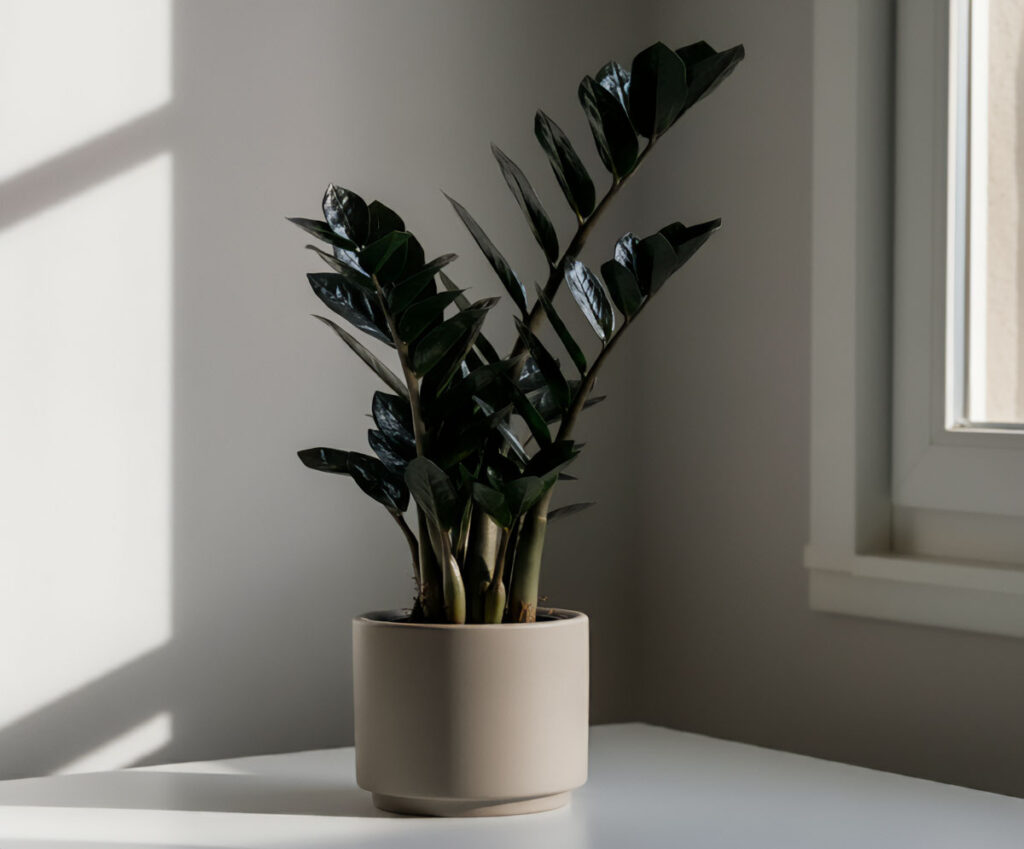
Black or Raven ZZ Plant is one of the easiest houseplants to care for, growing well in various light conditions, from low light to bright indirect light. Just be sure to use well-draining soil and a pot with drainage holes to prevent water from accumulating around the roots. This plant requires very little watering; let the soil dry out completely between waterings, which usually takes about 2 to 3 weeks. Be careful not to overwater, as this can lead to root rot. This houseplant is a great choice for people who don’t have much time to care for plants, as it can tolerate some neglect. Feed the plant every 2 to 3 months during the growing season with diluted liquid fertilizer to help it grow better.
It is considered one of the modern houseplants and one of my top choices for interior design.
Maximum size: It typically grows to about 60 to 90 centimeters in height, with a width of around 60 centimeters.
Toxicity: Yes
Care difficulty: Very easy
2. Black Pearl Pepper (Capsicum annuum)
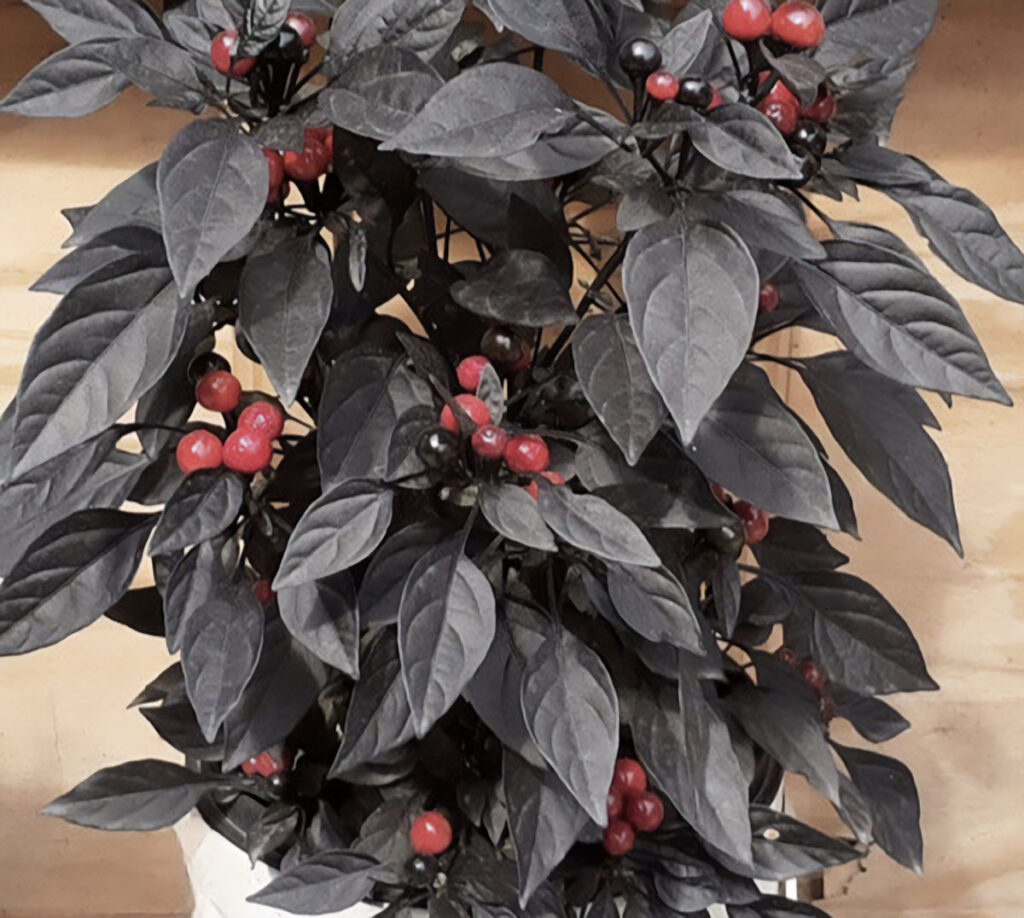
This is a sun-loving plant that grows best in full sunlight. Make sure the plant receives enough light, whether it’s kept indoors or outdoors. It prefers well-draining soil and needs regular watering, especially during hot and dry periods.
Keep the soil moist but not waterlogged. This plant benefits from regular feeding; fertilize it every 2 to 3 weeks during the growing season with a balanced fertilizer to support strong growth. To maintain its compact and bushy appearance, prune any excessive growth.
Maximum size: This beautiful ornamental plant can grow 45 to 60 centimeters tall.
Toxicity: Yes, this plant is toxic to pets, but its peppers are safe for humans (although they are very spicy).
Care difficulty: Medium
3. Black Magic Taro (Colocasia esculenta)
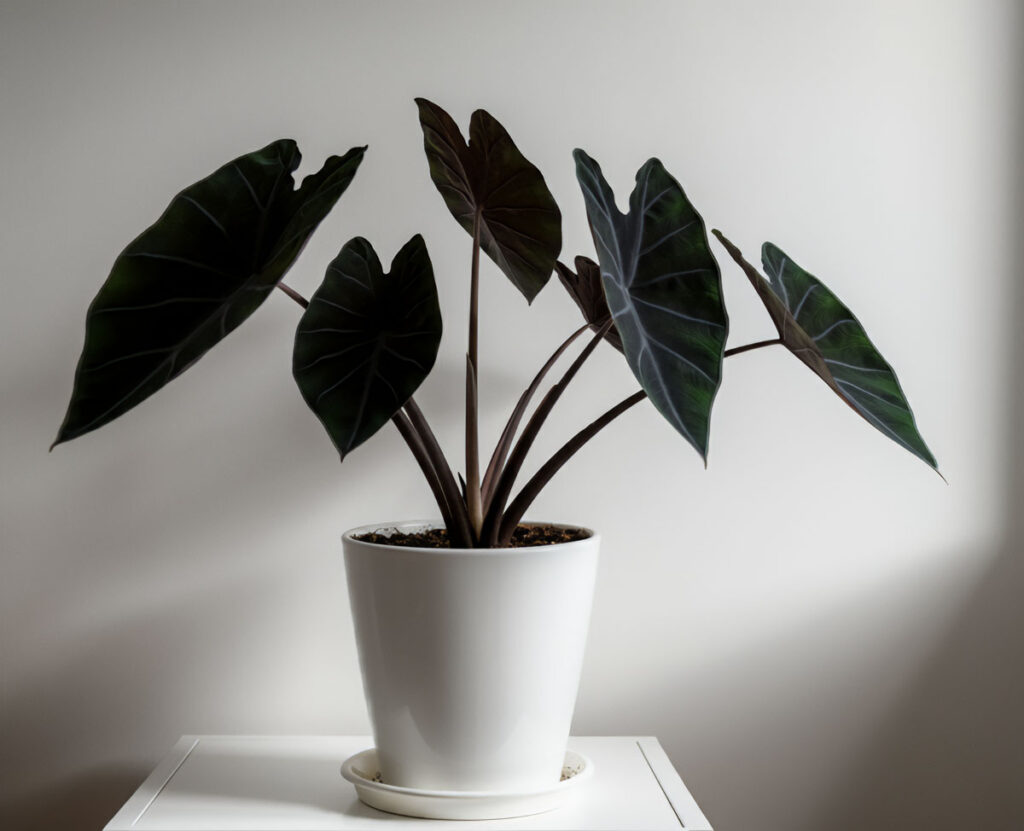
This big-leaf houseplant loves humidity and grows well in consistently moist environments. It prefers partial shade, especially in warmer areas, although it can tolerate full sun if watered regularly to prevent leaf burn. Rich, organic soil that holds moisture but drains well is ideal for this plant.
During the growing season, water it regularly to keep the soil constantly moist, but be careful not to waterlog the soil. Since Black Magic Taro loves humidity, misting or using a humidifier will help it grow strong and healthy. Feed it every two weeks with a balanced fertilizer during the growing season to support its large, attractive leaves.
Maximum size: This plant can grow up to 180 centimeters tall, making it a striking focal point in any space, whether indoors or outdoors.
Toxicity: Yes
Care difficulty: Medium
4. Zwartkop Aeonium (Aeonium arboreum)
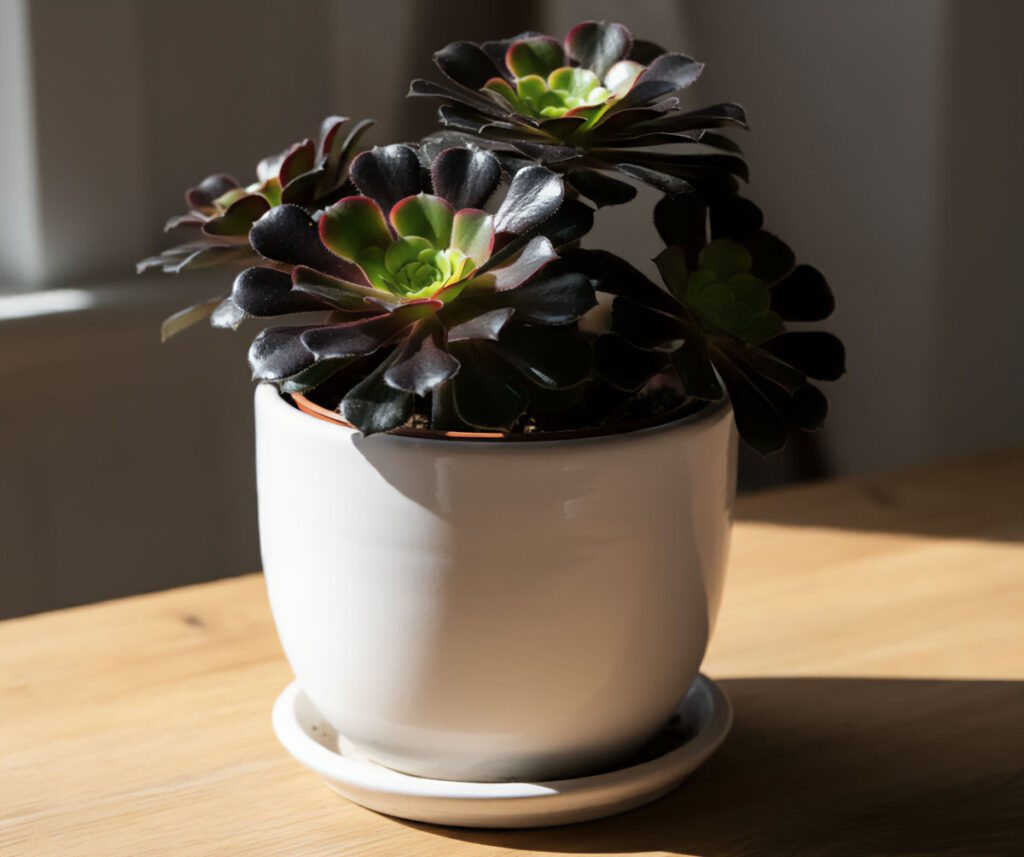
This plant grows best in full sunlight. It needs at least 6 hours of direct sun each day, so place it in a sunny location. The Zwartkop Aeonium prefers dry conditions, so let the soil dry out completely between waterings. Overwatering can lead to root rot, so it’s better to water less often.
Use a well-draining potting mix, such as a succulent or cactus soil. It has a summer dormancy period, so it’s a good idea to reduce watering during this time. Although Zwartkop Aeonium doesn’t need frequent fertilizing, a monthly feeding with a succulent-specific fertilizer during the growing season can encourage healthy growth.
Maximum size: This beautiful succulent can grow up to 90 centimeters tall, and its leaves can reach a diameter of 20 centimeters.
Toxicity: No
Care difficulty: Easy
5. Black Mondo Grass (Ophiopogon planiscapus Nigrescens)
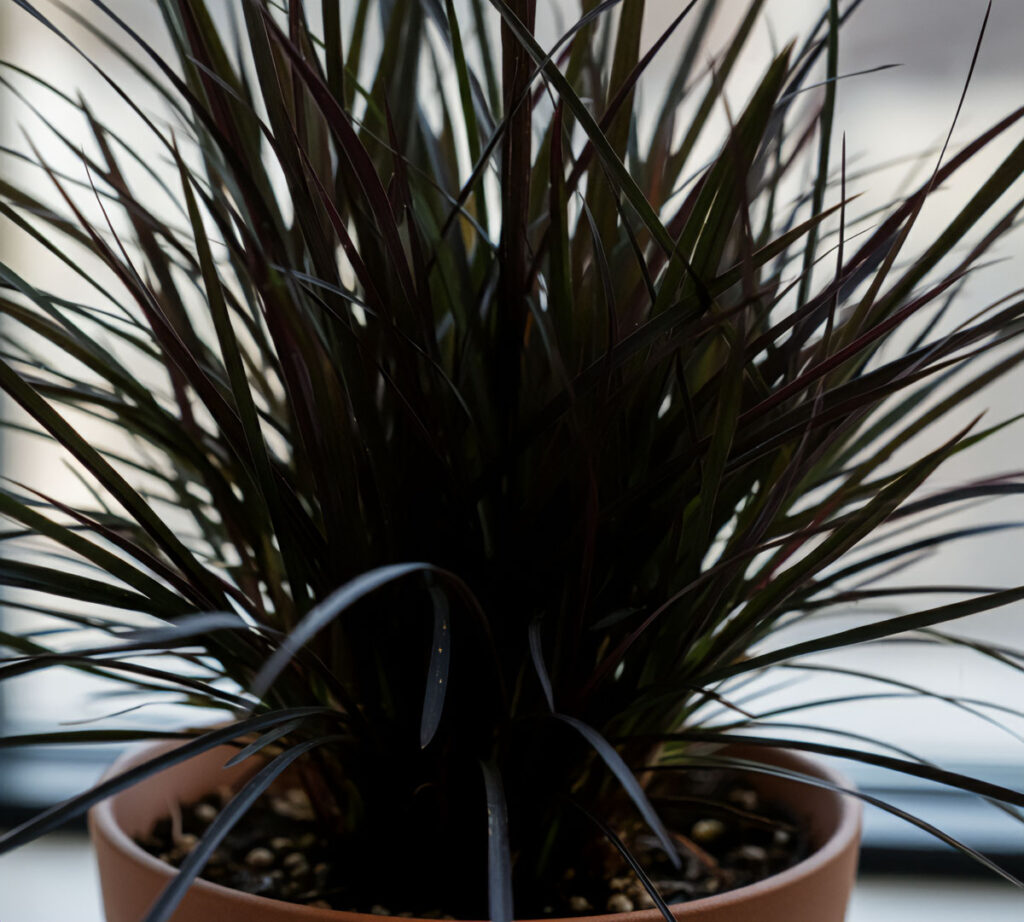
This tough plant grows in both full sun and partial shade. It prefers well-draining soil, like a loamy or sandy mix, and requires moderate watering. Keep the soil moist, but be careful not to let it become waterlogged. Once well-established, it has good drought tolerance and does not need frequent watering. While it can adapt to various light conditions, it grows best in partial shade, where its leaves develop their deepest black color. Feed it in spring with slow-release fertilizer to encourage lush growth throughout the growing season.
Maximum size: This small plant usually grows to about 15 to 30 centimeters in height and can spread up to 30 centimeters wide.
Toxicity: No
Care difficulty: Easy
6. Pilea Dark Mystery
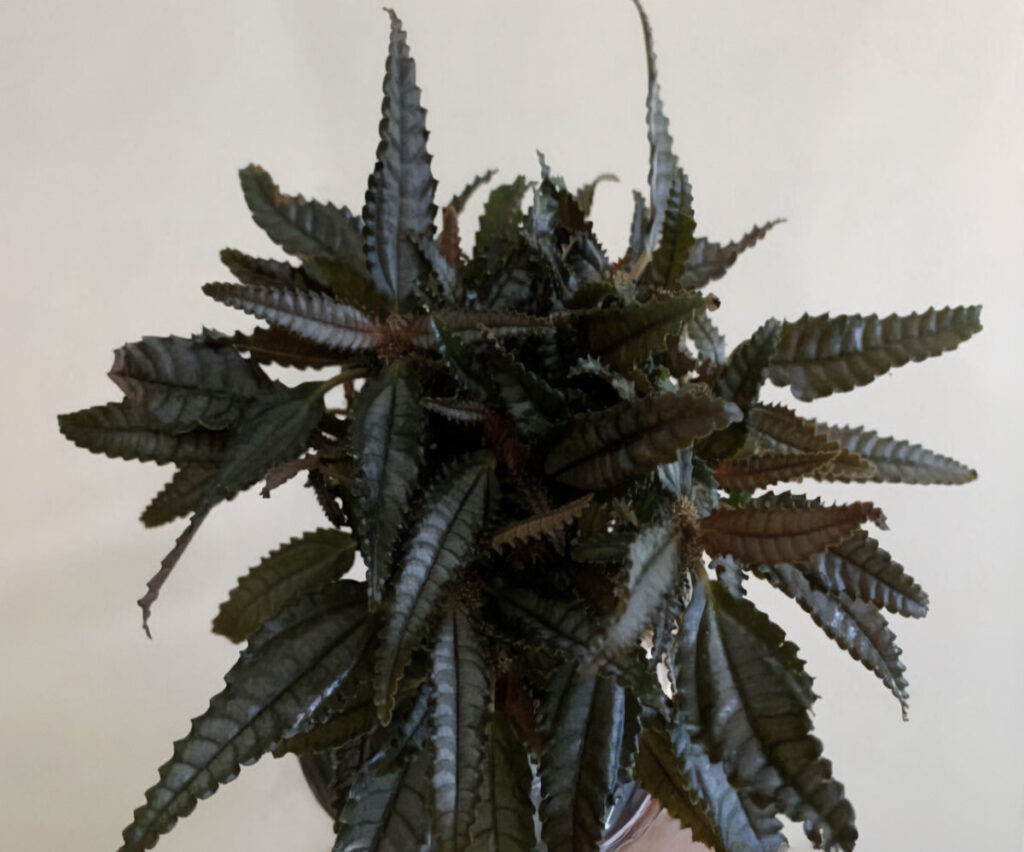
The Dark Mystery Pilea grows best in bright, indirect light and loves a humid environment. To care for it, keep a regular watering schedule and water when the top inch of soil is dry. A well-draining potting mix is essential, as Pilea is sensitive to waterlogged roots. Increase humidity by misting the plant regularly or placing it on a tray filled with pebbles and water.
During the growing season, feed it once a month with a balanced liquid fertilizer to promote strong growth. Avoid placing it in direct sunlight, as it can burn the leaves.
Maximum size: It typically grows to about 15 to 30 centimeters in height and spreads up to 20 centimeters wide.
Toxicity: No
Care difficulty: Medium
7. Dark Lord Philodendron
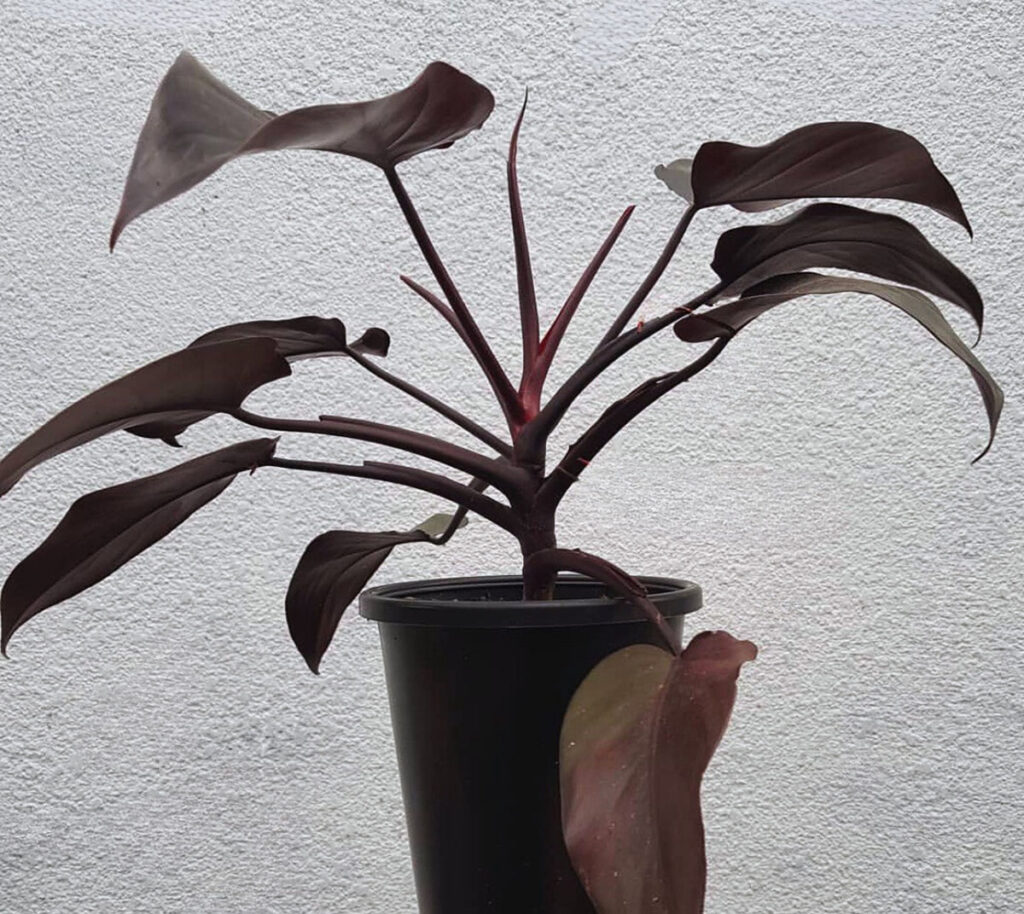
The Dark Lord Philodendron grows well in bright, indirect light but can also tolerate low-light conditions. It grows best in well-draining soil rich in organic matter, such as a mix of potting soil, perlite, and peat moss. Water the plant regularly, but allow the top inch of soil to dry between waterings to prevent root rot.
High humidity is important for this plant, so misting or placing it in a naturally humid room like a bathroom can help it grow. Feed the plant once a month during the growing season with a balanced liquid fertilizer to support the growth of its large, attractive leaves.
Maximum size: Indoors, it can grow up to 150 centimeters tall.
Toxicity: Yes, it is toxic if ingested.
Care difficulty: Medium
8. Black Velvet Alocasia
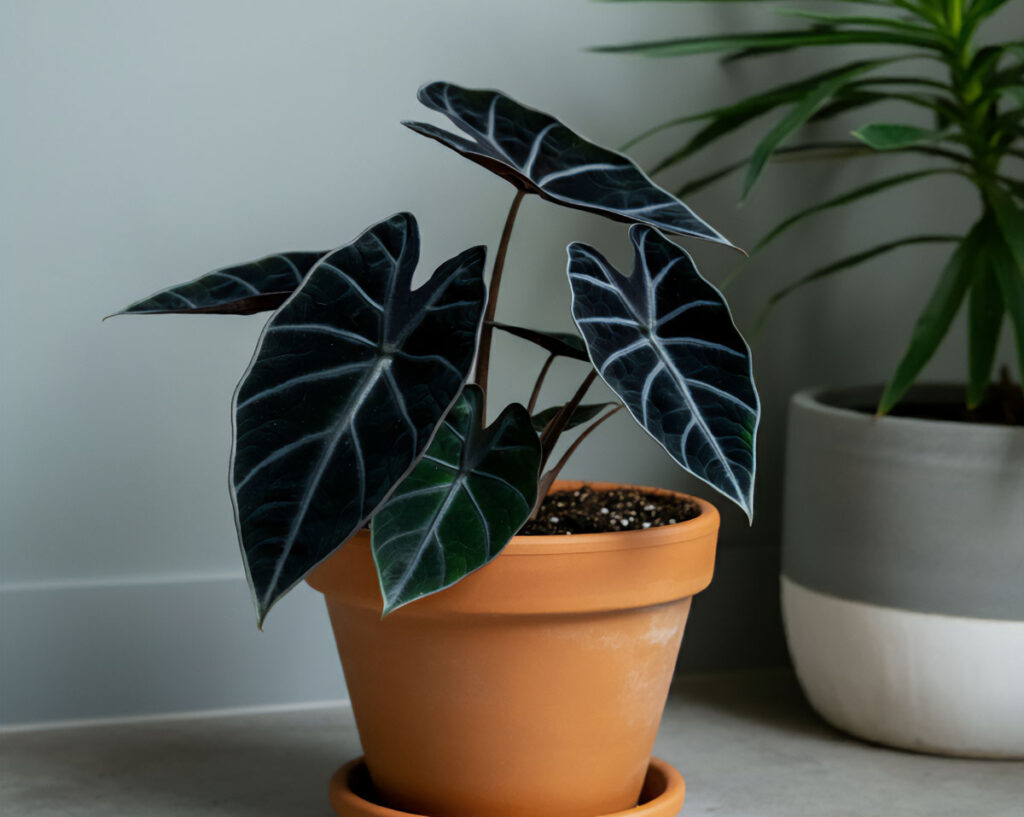
The Black Velvet Alocasia grows well in places with filtered light, but direct sunlight can harm its soft and velvety leaves. An ideal spot would be near a window with a sheer curtain or in a room with plenty of natural light. This plant enjoys consistently moist soil, but it should not be waterlogged. Water the plant when the top inch of soil has dried.
To prevent root rot, use houseplant soil that drains well, like potting mix combined with perlite or orchid bark. Humidity is also essential for this plant. You can mimic its natural tropical environment by misting it or using a humidifier. During the growing season (spring and summer), feed the plant once a month with a balanced liquid fertilizer. In winter, reduce watering and stop fertilizing to allow the plant to rest.
Maximum size: It can grow up to 30 to 45 centimeters tall and 25 to 30 centimeters wide, making it ideal for small spaces or tabletops.
Toxicity: Yes
Care difficulty: Medium
9. Black Knight Echeveria
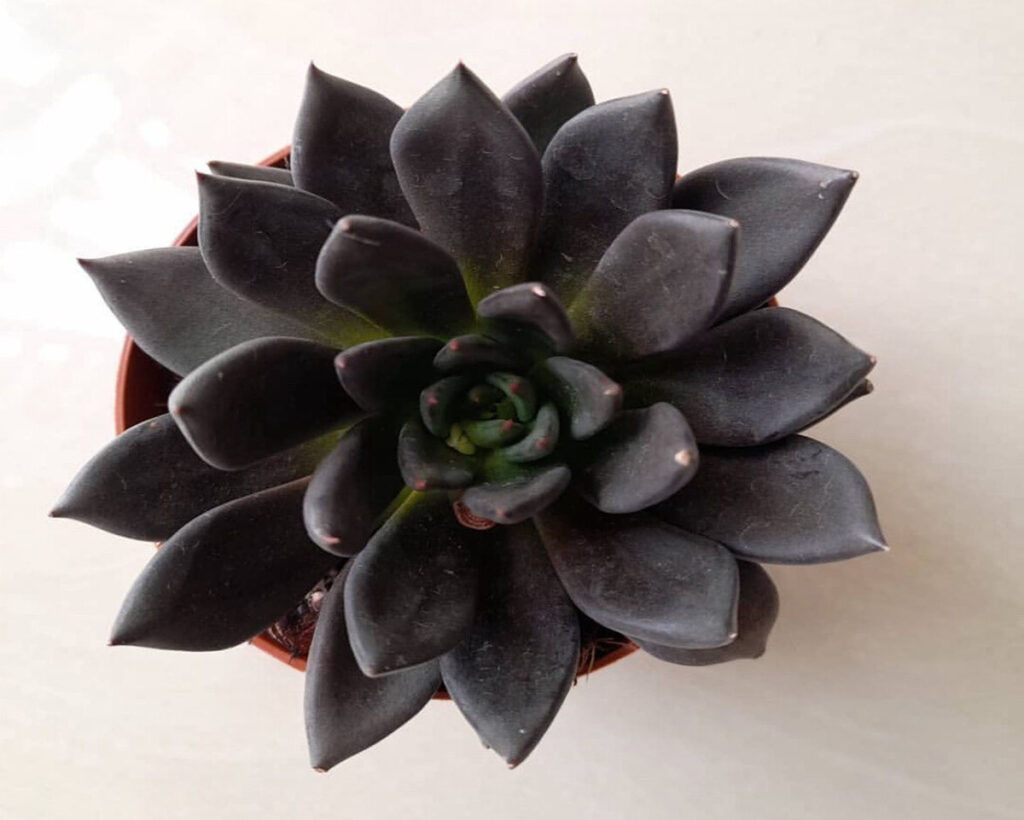
This plant grows best in full sunlight and prefers dry, well-draining soil like a cactus or succulent mix. Water sparingly and allow the soil to dry completely between waterings, as overwatering is a common issue with succulents. It doesn’t need frequent fertilizing, but using a cactus fertilizer once or twice during the growing season can help it grow. Make sure the plant receives enough sunlight to maintain the deep, rich color of its leaves.
Maximum size: This compact succulent grows to about 10 to 15 centimeters tall.
Toxicity: No
Care difficulty: Very easy
I hope this was helpful, and if you have any questions about black indoor plants, feel free to ask me in the comments section.
